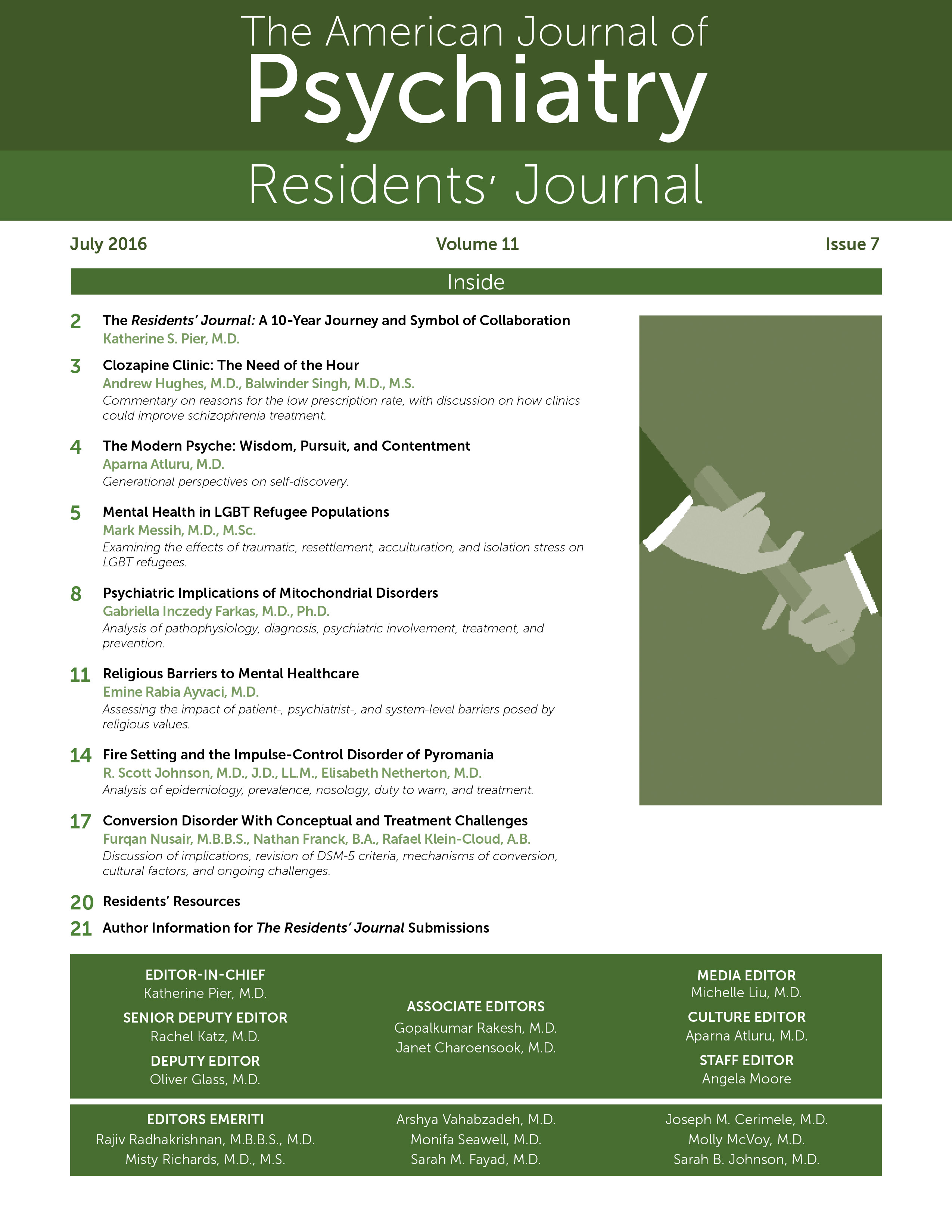Religious Barriers to Mental Healthcare
Access Barriers
Patient-Level
| Patient level |
| Conceptualization of disease |
| Beliefs in religious help for mental illness |
| Beliefs about perceived need for treatment |
| Use of nonpsychiatric forms of services |
| Fear of challenging religious beliefs |
| Fear of discrimination |
| Psychiatrist level |
| Difficulty recognizing nonpathological expression of religion |
| Reluctance in obtaining religious history |
| System level |
| Clergy’s lack of familiarity with the system |
| Limited referral from clergy |
| Limited understanding of clergy |
| Lack of coordination between faith-based services and formal healthcare |
| Reluctance of collaboration by faith-based providers |
Psychiatrist-Level
System-Level
Implications
Conclusions
Key Points/Clinical Pearls
Acknowledgments
References
Information & Authors
Information
Published In
History
Authors
Metrics & Citations
Metrics
Citations
Export Citations
If you have the appropriate software installed, you can download article citation data to the citation manager of your choice. Simply select your manager software from the list below and click Download.
For more information or tips please see 'Downloading to a citation manager' in the Help menu.
View Options
View options
PDF/EPUB
View PDF/EPUBGet Access
Login options
Already a subscriber? Access your subscription through your login credentials or your institution for full access to this article.
Personal login Institutional Login Open Athens loginNot a subscriber?
PsychiatryOnline subscription options offer access to the DSM-5-TR® library, books, journals, CME, and patient resources. This all-in-one virtual library provides psychiatrists and mental health professionals with key resources for diagnosis, treatment, research, and professional development.
Need more help? PsychiatryOnline Customer Service may be reached by emailing [email protected] or by calling 800-368-5777 (in the U.S.) or 703-907-7322 (outside the U.S.).
